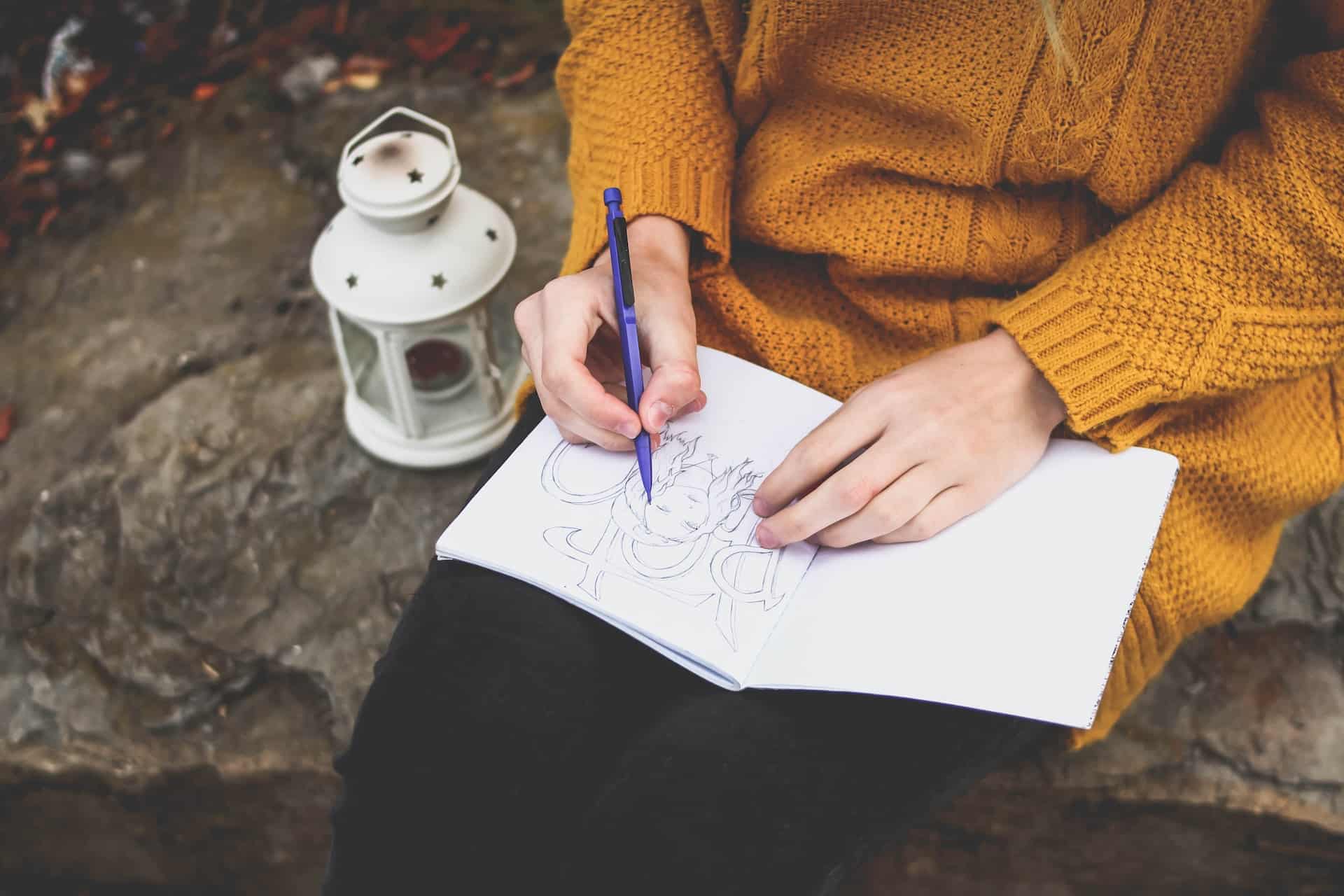
In other posts on Writing, Music, Art, and Dance Therapy activities, I write about how each of these art channels can be helpful in recovery.
While each of these creative healing disciplines exists all on their own, there is also a special modality called Expressive Arts Therapy which is based on weaving all the arts together.
Using all the arts together, we move from modality to modality, starting out in one art discipline, then shifting into another and then another and another.
For example you might start out doing a drama therapy activity (such as improvising a monologue), then decide to switch channels and do a drawing about that same topic, then switch again to dance movement. And so on!
The purpose and benefit of changing between disciplines as you follow the unfolding process live is that our soul’s information can be understood differently through different channels. By translating a soul signal back and forth between different modalities, there is a way to glean more information, depth, meaning and context than if we simply use one art practice alone.
If you want to try Expressive Arts Therapy right now, here is an exercise for exploring what it’s like to switch between arts disciplines as a way of deepening your soul work. I do recommend it to anyone on the journey of recovery!
Expressive Arts Therapy: the Intermodal Weave
1. Decide What You’re Working On
Identify a specific thing you want to work on, what you would call “a problem” you’re curious about. For example, if you are struggling with feeling low self-esteem, you would set the intention to explore the problem of your low self-esteem.
2. Express The Problem Visually as Art
Start in the visual arts channel with some free form scribbling or intuitive mark making (so, not drawing anything specific per se, more like letting the movement of your hand around the page make an abstract piece). Although you are working with a specific theme, the suggestion is to not overly think about it, nor to try to make symbolic representations, rather just let yourself loosely muse on the topic while your hand moves around capturing the feeling tones, the qualities, and the general vibe of the topic. It’s very important that you don’t judge, and you remind yourself you are capturing the qualities of the issue’s feeling, how it feels to you, and not “making art”.
3. Reflect on What You Drew
When you feel that you are complete with making a visual expression of how you feel, set the drawing you made a little bit away from yourself, at some distance, perhaps half way across the room, and look at it for a while. From a distance, see if there is a portion of the drawing that you are especially interested in. A specific wavelet in a specific color, such as a spiral of pink at the bottom right of your drawing, might capture your attention.
4. Move What You See in Your Drawing
Now allow yourself to ease into the movement channel, and see if you can catch the dynamics of the pink spiral in a dance, allowing your body to explore the motion and direction captured in your drawing. You may find your body also making a kind of spiral motion, like a leaf falling in the wind, and an image such as that may come into your mind as you do.
5. Capture Your Dance In Words
After a few minutes of exploring in movement, allow your body to come to completion and rest, and shift into the writing channel to describe what you just experienced in your dance. For example, you might start writing, with a poetic feeling to it: I saw a leaf falling, dancing the spiral of falling from the tree. I felt how lonely, how dried out and sad I am. Allow yourself to write for a good while about anything that felt meaningful, being as poetic and colorful in your language as feels right for you today.
6. Synthesize
Through working with your topic from many different angles, you end up with a lot of information you can synthesize together. For example, you may realize that your feeling of low self-esteem is something like the feeling of a dead leaf falling from a tree, feeling lonely and sad and a bit disconnected from life. Through this you may realize that you are also the tree, looking at the leaf and allowing it to fall, letting it go, and you may identify more with the tree than the leaf. Whatever happens, if this process works for you, you’ll come to a new place through it, and may find yourself standing at a vista that’s helpful, healing and integrating.
Happy exploring!

